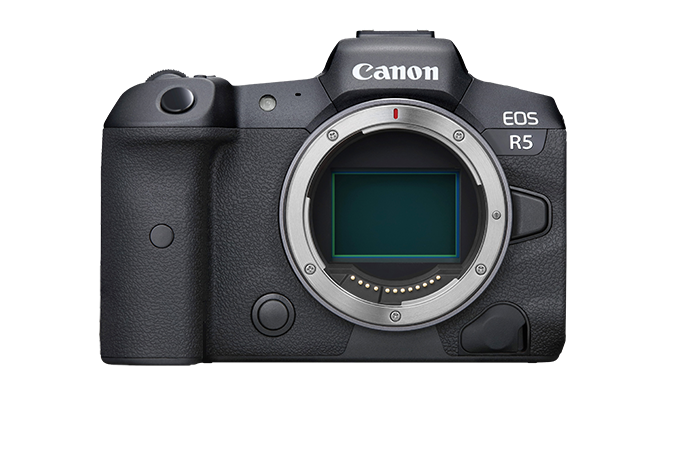
After months of teasing, rumors, and wild internet speculation, we finally know what Canon’s next foray into the professional mirrorless market is going to offer.
Among the headlining specs are 8K uncropped video, 12-20 fps stills in burst mode, and a newly designed sensor that promises to bring class leading performance to Canon’s mirrorless lineup.
Where does the R5 fit in Canon’s camera lineup?
The EOS R5 looks to be the mirrorless equivalent of the Canon EOS 5D DSLR. Not only because they use the same model number, but also because the specs and target market look like they align with the idea of an “improved” 5D for their mirrorless lineup. If you are wondering where that leaves the EOS R, that is a good question. Nobody really knows for sure, but the general assumption is that the R series will be a lower end model than the R5 series. Canon has also called the R5 their “flagship” camera, which could mean this is as good as it gets for the RF mount for a while. In other words, if you’re looking for that “professional” Canon mirrorless camera – this is it.
How is the EOS R5 different from the EOS R?
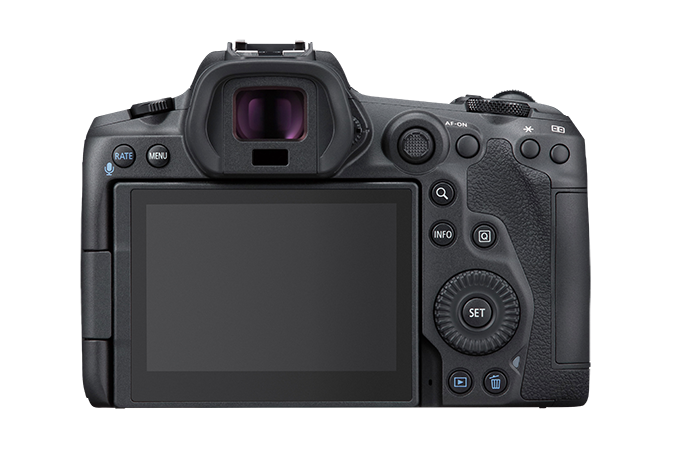
If you have or have seen an EOS R, you will notice that the EOS R5 looks remarkably like the EOS R. So, what exactly is the R5 doing differently that warrants all the excitement? The EOS R5 brings quite a few new features to the table and some industry firsts as well. Below are some the top features the EOS R5 has that the EOS R does not:
- IBIS or In Body Image Stabilization
- 4k and 8k uncropped video
- Dual Card Slots (1 CF & 1 SD)
- Improved face & eye detect AF, and new animal face & eye detect AF
- 12fps burst (20fps electronic shutter) vs 7fps max on the EOS R
- A high resolution 45-megapixel sensor
- Faster DIGIC X processor
- New video centric features like Zebra lines
- A new, higher resolution EVF
- No EVF blackout between shots in burst mode
- The return of the rear wheel from the 5D series, as well as the “joystick” used for quickly navigating menus and controlling focus points
And that is just some of the new features. Based on this list it is easy to conclude that this camera is a huge leap beyond what the EOS R can do. This is not just an upgraded R it is a whole new product line.
Is the EOS R5 good for video?
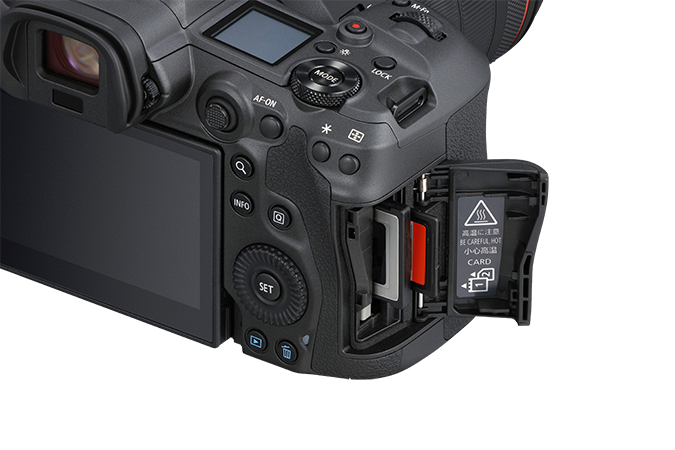
I think video shooters will be impressed with the Full Frame sensor and IBIS which will help expand the potential of lenses like the RF 28-70 f/2 that do not have stabilization built in. Canon really bumped up the video specs for this camera with full frame 8k capture, full frame 4k at a maximum of 120fps, and other high-end video features. In fact, the EOS R5 looks so good for video it is almost more video camera than stills camera. I do not think anyone would be disappointed with this camera for video based on what we know so far.
Is the EOS R5 a good value for stills photography?
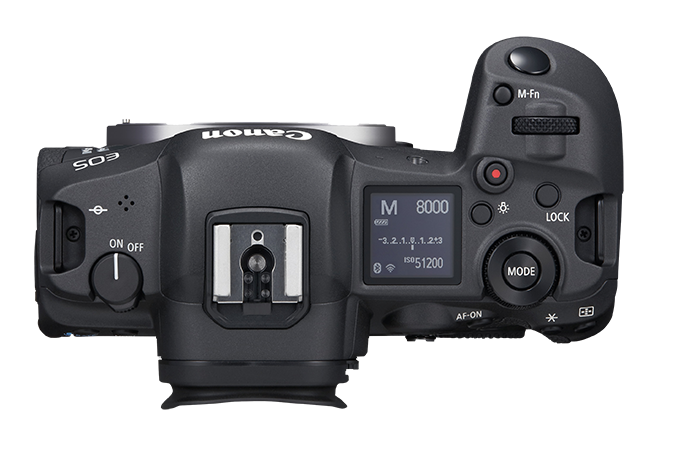
It looks like a lot of the R&D that went into this camera was on the video side of the equation so it’s fair to wonder whether it is a good value if you are only shooting stills. The answer to that right now is yes and no. Value is relative and while this is the best mirrorless camera you can get from Canon it might not be all that much better than the EOS R depending on what and how you shoot. If you are primarily shooting landscapes or portraits, I doubt the R5 is worth it just for the sake of upgrading. However, if you are doing birding, action, or sports photography where AF is critical, the EOS R5 with its upgraded DIGIC processor should be clearly better than the older EOS R.
How does the EOS R5 compare to the competition?
The EOS R was and is a great camera, it offers professional image quality and excellent reliable AF in a wide range of lighting conditions. However, it was missing some features that the competition had at similar price points such as IBIS, dual card slots, full frame video capture, and faster burst mode shooting. And although the EOS R has reliable AF in many situations, the tracking AF on moving subjects was not quite up to the level of the best Canon had to offer. With the R5 adding on all those missing features and sporting a faster processor, it should erase any deficits perceived or otherwise between Canon and the competition. In fact, when the EOS R5 is released it will be the most feature complete mirrorless camera on the market.
What are the alternatives to the EOS R5?
If you are shooting video, there really are no competitors to the EOS R5. It is so high up the list just based on the basic specs that it is competing against cameras in different genres altogether. Nothing in this form factor competes against it for video. In terms of stills the question is how much resolution and dynamic range do you want or need? And for most people the R5 is going to meet those requirements perfectly fine. It is possible there will be a higher resolution version in the future and the rumor mill has suggested something in the range of 83 megapixels could be in the works, but at that resolution the effects of diffraction would be visible at f/6.1 or lower. While it is technically possible based on the pixel density of Canon’s recent 32-megapixel APS-C sensor, it has not been announced and we probably will not hear a peep about it in the foreseeable future.
Who should buy the EOS R5?
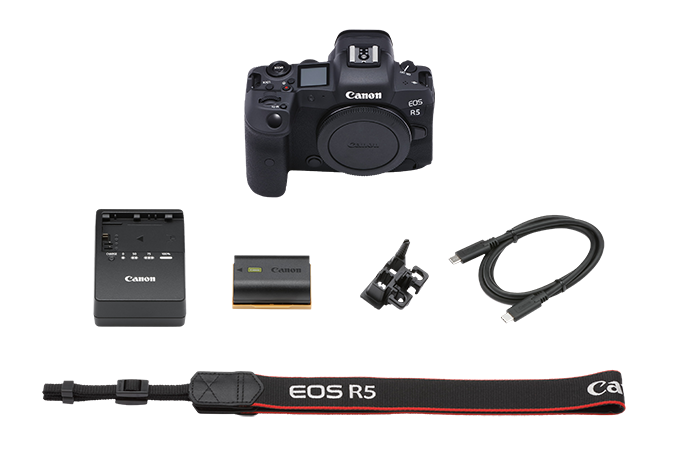
Videographers would be well served to seriously consider this camera based on what it brings to the table. Canon has clearly made it a point to meet the needs of videographers here by including features and specs that previously only appeared in cinema cameras.
Stills shooters who want better AF performance. Canon has done a lot to improve the AF performance of the EOS R5 by adding new algorithms for animal face tracking and beefing up the processor to handle all the data coming from the sensor better. Where the EOS R’s AF was very good, the EOS R5 promises to be exceptional.
Anyone who has been “holding out” for that “professional” mirrorless camera from Canon should seriously consider this one. It looks like Canon wrote down every complaint anyone had about the EOS R and fixed it in the R5. From dual card slots, to the joystick, to finally adding IBIS, this is it, THE professional Canon mirrorless camera you have been stubbornly holding out for.
Who should not buy the EOS R5?
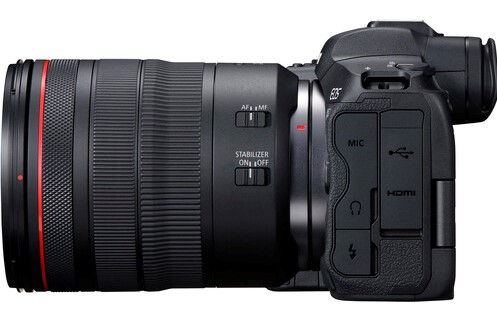
People who want a super lightweight camera. If you are looking for a super lightweight camera the Canon EOS M series is a better option than the R5. Some people just do not like carrying around a lot of weight, for them Canon has made the EOS M. Rumors have it that the next version of the EOS M should also get IBIS, so be on the lookout for that if you need a super lightweight camera.
Conclusion
Canon finally made the camera everyone has been asking them to make for years.
